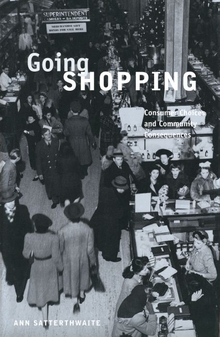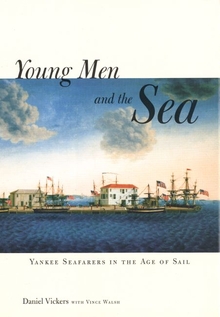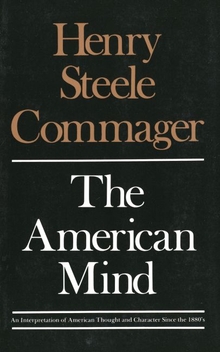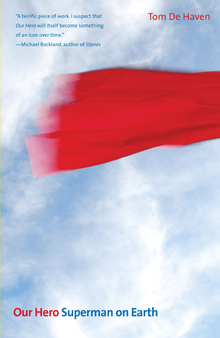Going Shopping
WARNING
You are viewing an older version of the Yalebooks website. Please visit out new website with more updated information and a better user experience: https://www.yalebooks.com
Consumer Choices and Community Consequences
Ann Satterthwaite
We are how we shop. From Mesopotamian merchants and the fairs of medieval Europe to marble palace department stores and now Wal-Mart and the Internet, social, cultural, economic, and moral forces have shaped our shopping. In this engaging and generously illustrated book, Ann Satterthwaite traces the history of shopping and considers its meaning and significance.
According to Satterthwaite, shopping has become part of the American dream. To choose and to buy constitute not only a basic economic liberty but also the capacity to improve and transform ourselves. How we shop also reflects our culture, as in the twentieth century disposable incomes have grown, women’s roles have changed, and new styles of shopping and advertising have made their impacts on an old adventure. But there is a downside. Shopping used to be a friendly business: shoppers and clerks knew each other, the country crossroads stores and downtown markets were social as much as economic hubs. Shopping was meshed with civic life—post offices, town halls, courts, and churches. In place of this almost vanished scene have come superstores and the franchises of international companies staffed by pressured clerks in featureless commercial wastelands. Shopping and community have been savagely divorced.
However, shopping as a social plus need not be lost, says Satterthwaite. Examining trends in the United States and abroad where new approaches to an old activity are strengthening its social and civic role, she states that shopping is more than ever a public concern with profound public impacts.
According to Satterthwaite, shopping has become part of the American dream. To choose and to buy constitute not only a basic economic liberty but also the capacity to improve and transform ourselves. How we shop also reflects our culture, as in the twentieth century disposable incomes have grown, women’s roles have changed, and new styles of shopping and advertising have made their impacts on an old adventure. But there is a downside. Shopping used to be a friendly business: shoppers and clerks knew each other, the country crossroads stores and downtown markets were social as much as economic hubs. Shopping was meshed with civic life—post offices, town halls, courts, and churches. In place of this almost vanished scene have come superstores and the franchises of international companies staffed by pressured clerks in featureless commercial wastelands. Shopping and community have been savagely divorced.
However, shopping as a social plus need not be lost, says Satterthwaite. Examining trends in the United States and abroad where new approaches to an old activity are strengthening its social and civic role, she states that shopping is more than ever a public concern with profound public impacts.
Ann Satterthwaite is a city planner in Washington, D.C.
“This enjoyable book engages in a significant debate about civility, community, and public space. Its closest parallels are works by Jane Jacobs and Ada Louise Huxtable.”—Sharon Zukin, City University of New York
“Breaks new ground by showing how recent changes in shopping must be acknowledged as forces that strongly contribute to the weakening of community ties. Satterthwaite’s suggested remedies form the basis for beginning an important discussion of these issues.”—Tony Hiss, author of The Experience of Place
“[An] engagingly written survey. Satterthwaite . . . makes a strong case in this richly documented, well-produced, and amply illustrated book. In the spirit of Satterthwaite’s argument, this reviewer encourages readers to go immediately to their nearest bookstore/café/community space and purchase this book. Once there, linger awhile, socialize a bit, and then go home to read it. Recommended for public, academic, and professional library collections.”—Choice
“A contemporary, well-informed, and nuanced judgment of the impact of malls, remote retail, big box stores, and other expressions of contemporary shopping.”—Gary Cross, Journal of Economic History
“In this intriguing and well-researched book, Satterthwaite . . . provides an in-depth examination of the history and societal impacts of shopping. . . . Excellently written and well argued, Satterthwaite’s book will make a fine addition to the collection of any academic or large public library.”—Library Journal
“Satterthwaite’s study is useful both as a historical synthesis about shopping and consumerism and as a narrative that foregrounds the current thinking among city planners on commercial development.”—Regina Lee Blaszczyk, Enterprise & Society
“[A] wide-ranging history of shopping. . . . Going Shopping is thoughtful and widely researched, and is a useful book for anyone interested in the quest to balance community well-being against economic efficiency.”—Philip Langdon, The American Enterprise
"Satterthwaite makes a convincing case that today's retailers have a far, far different impact on communities than their predecessors of, say, a half-century ago."—Joel Makower, Journal of Industrial Ecology
ISBN: 9780300084214
Publication Date: December 11, 2001
Publication Date: December 11, 2001
400 pages, 6 1/8 x 9 1/4
150 b/w illus.
150 b/w illus.








